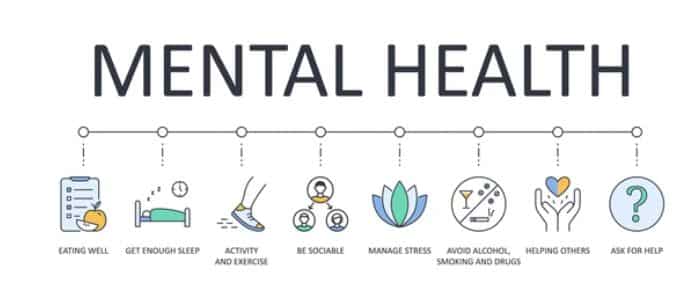1: Introduction and Understanding Mental Health.
Mental health is fundamental aspect of human well-being, just as crucial as physical health. It encompasses emotional, psychological, and social well-being, affecting how individuals think, feel, and act. It also influences how people handle stress, relate to others, and make choices. Yet, despite its importance, mental health often receives less attention, funding, and care than physical health.Globally, mental health issues are on the rise. According to the World Health Organization (WHO), approximately one in eight people live with a mental health disorder. Conditions such as depression, anxiety, bipolar disorder, and schizophrenia are increasingly common, cutting across all ages, backgrounds, and cultures.

The COVID-19 pandemic further exacerbated mental health challenges, leading to increased feelings of isolation, uncertainty, and grief. Despite growing awareness, there remains a significant stigma surrounding mental illness. Many people suffering from mental health conditions avoid seeking help due to shame or fear of judgment. This stigma not only affects individuals but also influences healthcare systems, policy development, and societal attitudes.
2: Barriers to Mental Health Care Access to mental health care remains one of the biggest challenges worldwide. Even in developed countries, mental health services are often underfunded and understaffed. In low- and middle-income countries, the situation is even more dire, with some regions having fewer than one psychiatrist per 100,000 people.Several barriers contribute to the limited access to mental health care:
1. Stigma and Discrimination: Many individuals fear being labeled as “weak” or “unstable,” preventing them from seeking help. This stigma can be internalized, creating feelings of shame and self-doubt.

2. Lack of Resources: Mental health services are often under-prioritized in public health systems. There are insufficient numbers of trained professionals, inadequate facilities, and limited insurance coverage.
3. Economic Barriers: For many people, therapy and medication are prohibitively expensive. Without insurance or government support, consistent care becomes inaccessible.
4. Geographical Limitations: In rural or remote areas, mental health services may be nonexistent. Long travel distances and limited transportation options make seeking care difficult.
5. Cultural and Language Barriers: In diverse societies, language differences and cultural misunderstandings can hinder effective communication between patients and providers.These barriers create a gap between those in need and the services available, resulting in untreated mental illnesses, reduced quality of life, and, in some cases, tragic outcomes such as suicide.

3: Advancing Mental Health Care Solutions Improving mental health care requires a multi-faceted approach involving governments, communities, healthcare systems, and individuals. Here are some key strategies:
1. Education and Awareness: Public awareness campaigns can combat stigma and encourage people to seek help early. Schools and workplaces should incorporate mental health education to foster understanding and resilience from a young age.
2. Policy and Funding: Governments must allocate sufficient resources to mental health. This includes funding hospitals, community centers, training programs, and research initiatives. Integrating mental health into primary care can also reduce costs and improve access.
3. Tele health and Digital Tools: The rise of teletherapy and mental health apps has made support more accessible, especially in underserved areas. These tools can connect individuals to professionals regardless of geography, and often at a lower cost.
4. Community-Based Care: Local support networks, such as peer support groups and nonprofit organizations, play a vital role. Community mental health centers can provide accessible and culturally sensitive care.
5. Workplace Support: Mental health-friendly workplaces can reduce burnout and improve productivity. Employers should offer flexible working conditions, access to counseling, and training on mental health awareness.
6. Training Healthcare Workers: General practitioners and nurses can be trained to recognize and address common mental health conditions. This reduces reliance on specialists and broadens access.Page
4: Moving Toward a Mentally Healthier World A mentally healthier society benefits everyone. It leads to better physical health, improved relationships, higher economic productivity, and stronger communities. Addressing mental health is not just a medical responsibility—it is a social, economic, and ethical imperative.Each individual can contribute to a culture of care and empathy. This might involve checking in with loved ones, advocating for mental health resources in your community, or simply listening without judgment. Institutions, meanwhile, must continue to reform systems, expand services, and uphold the dignity of those facing mental health challenges.

The journey toward better mental health care is ongoing. It requires compassion, commitment, and collaboration at all levels. By acknowledging the importance of mental health and working to eliminate barriers, we can build a world where everyone has the opportunity to thrive—not just survive.




